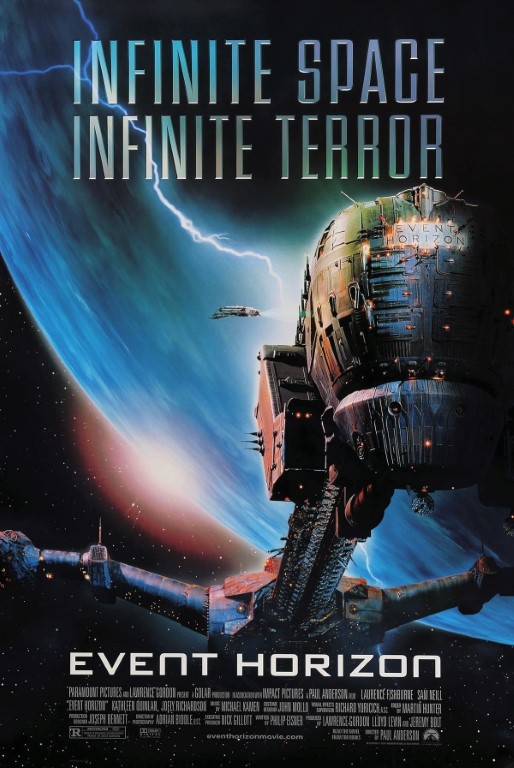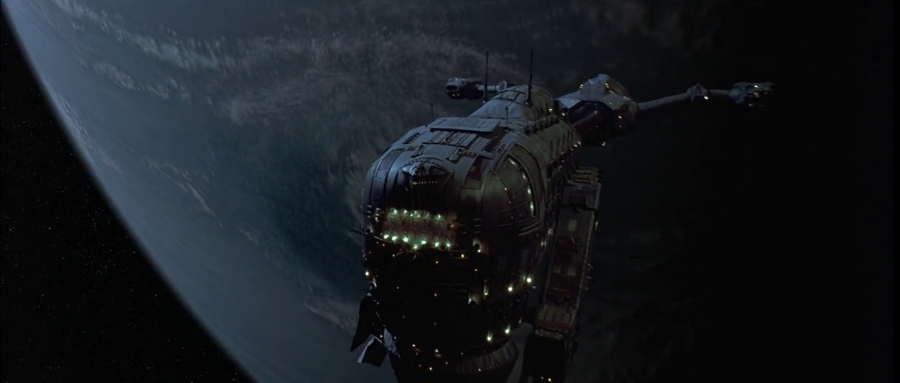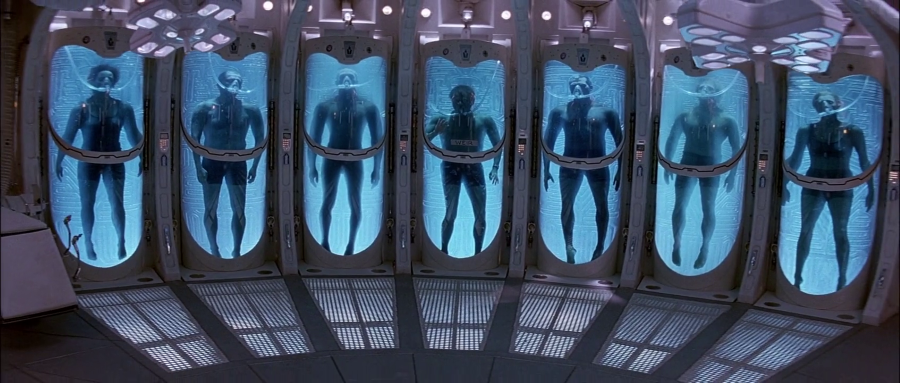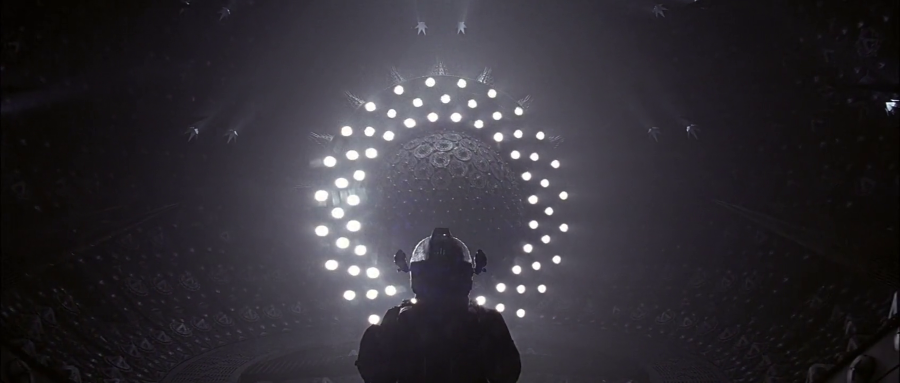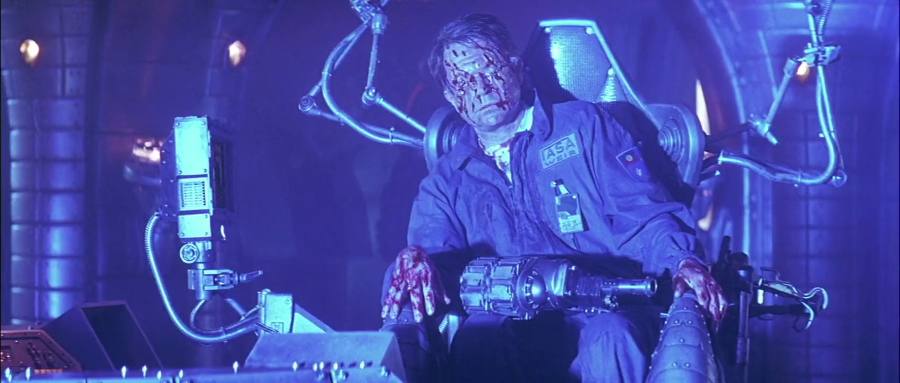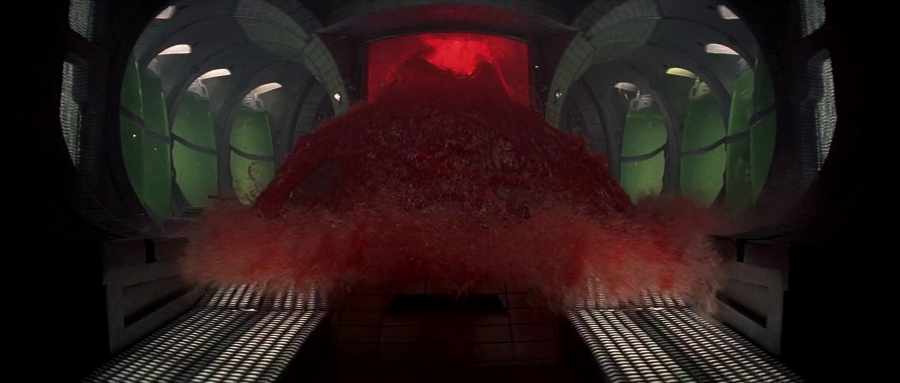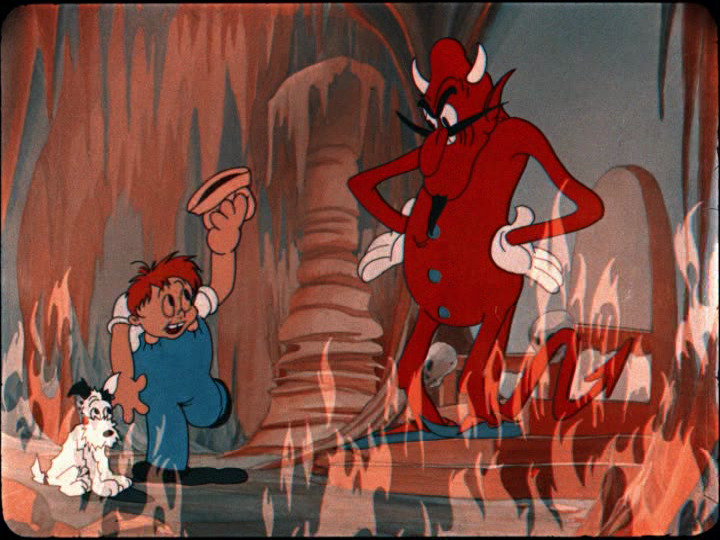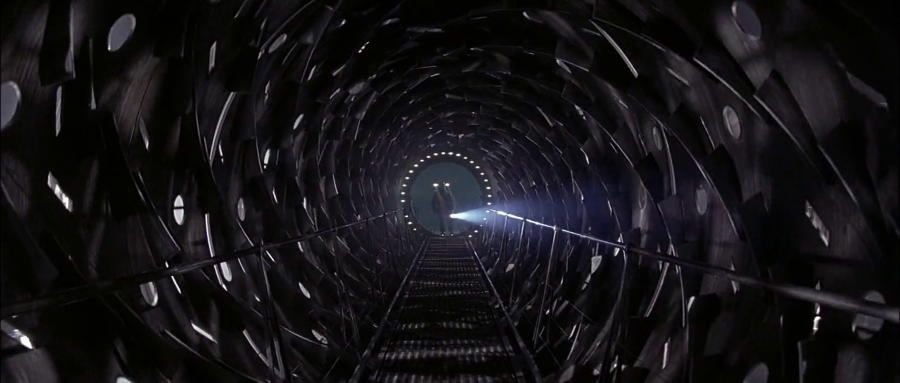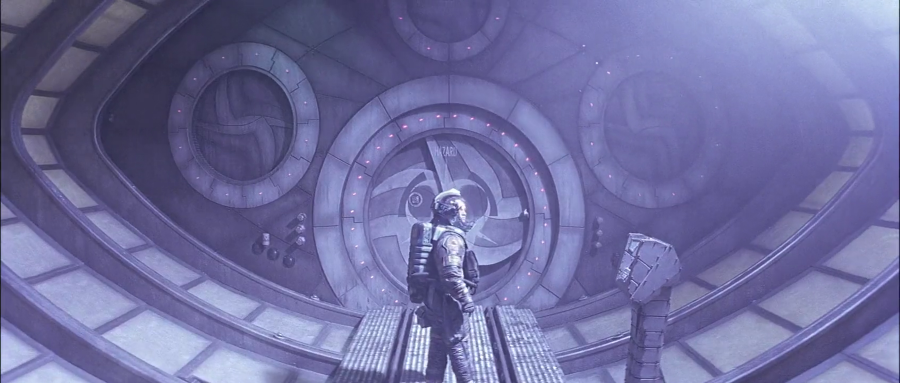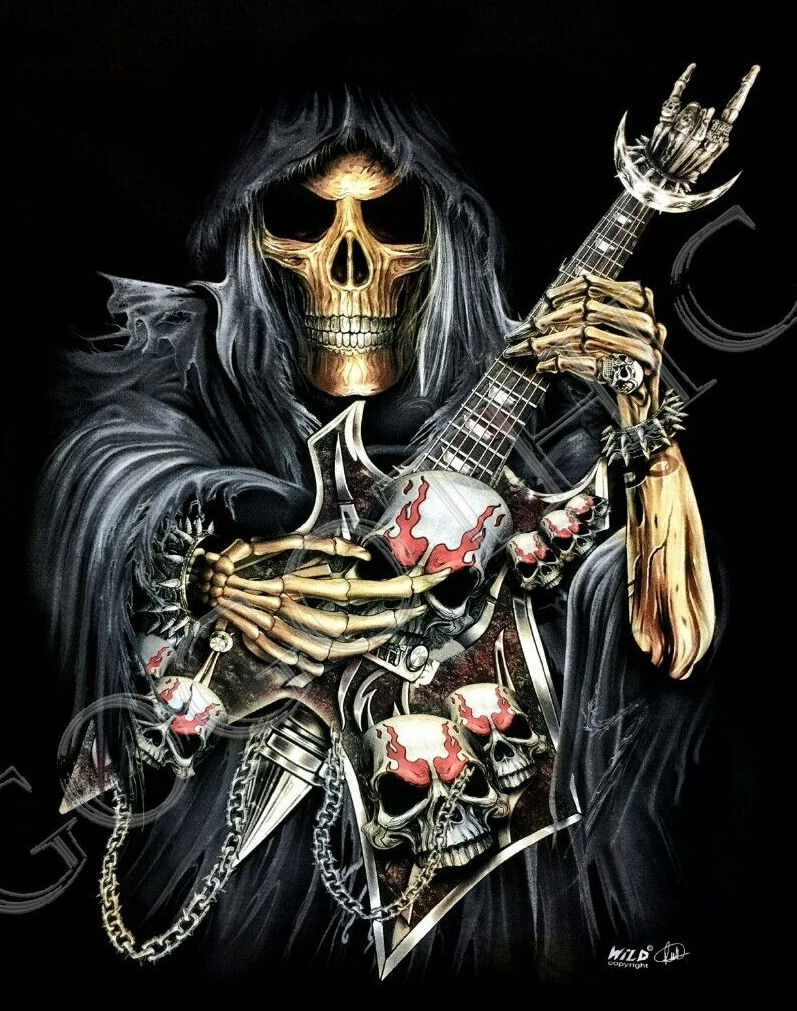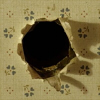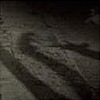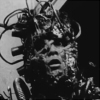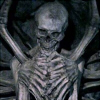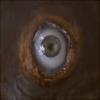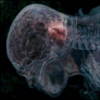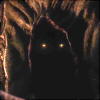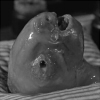By Jonathan Wojcik
ENTRY 16: EVENT HORIZON
A distress signal is received from the ship, but it consists of nothing other than agonized screams and a single barely-intelligent phrase: "liberate me."
From there, the crew begin to experience disturbing, lifelike visions constructed from their past traumas, deepest guilt and darkest fears, and you can already see some parallels here to Galaxy of Terror. Some see grisly manifestations of deceased loved ones or people that they've wronged. Weir in particular begins to see the "ghost" of his wife, who had killed herself for unknown reasons while he was away, working on the Event Horizon itself. Her phantasm appears to him with no eyes - only empty, red holes - promising that she's waiting for him to join her.
The rest of the team finally uncovers the ship's video logs, hoping to figure out who massacred its entire crew, or why, only to discover the more hideous and more confusing truth that it was everyone; that when the ship re-emerged from wherever it had gone, its crew was already engaged in a mass orgy of sex, torture, cannibalism and mutilation, its captain last seen holding his own eyeballs in his hands as he says Liberate tutemet ex inferis or "save yourself from hell."
MONSTER ANALYSIS: THE EVENT HORIZON
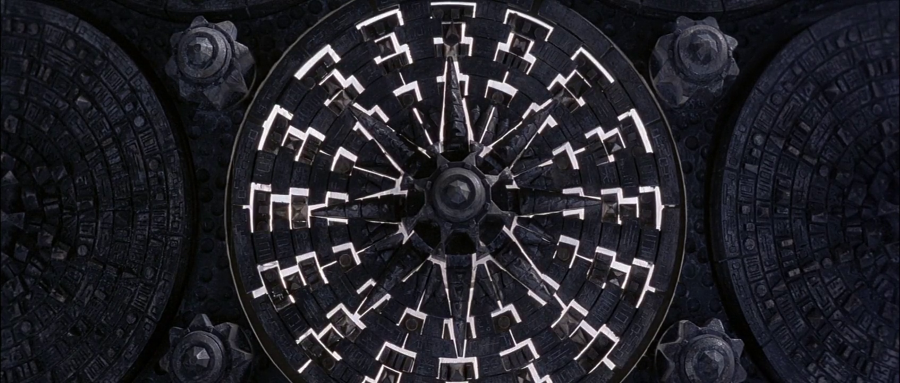
In its earliest stages, the script for Event Horizon had a starship "haunted" by the "ghosts" of tentacled interdimensional lifeforms, and as much as we like creatures and critters around here, it never would have left such a lasting impression on audiences (or qualified for these reviews) with such a conventional space-alien angle. The idea of connecting "hyperspace travel" to the realm of demons and devils wasn't entirely new in 1997 either; it was already the central thrust of Doom, and screenwriter Philip Eisner has actually cited the "Warp" from Warhammer 40,000 as a major inspiration, the two so similar that Warhammer fandom embraces this movie as a kind of prequel story. There are also some obvious similarities to Galaxy of Terror, which we reviewed just a couple of entries ago, but these examples were all fairly niche at the time; video gaming was still a "kid's hobby" in the 90's and miniature wargaming even less mainstream. Event Horizon brought the premise of space-warp-hell to relatively mainstream cinematic consciousness, and went on to inspire use of the trope in many works of fiction since.
I said that I remembered the "failure" of this movie back in the day, and I believe a part of that can also be attributed to a harsher divide between "science fiction" and "supernatural fantasy" at the time. The two were already blended with some frequency throughout popular culture, sure, but I swear I can recall a time when it was seldom ever taken seriously. It's not like today, when audiences turn out in droves to watch superhero norse gods beating up CG cyborgs or whatever Disney's cranking out these days; in my best recollection of the 90's, mainstream moviegoers had difficulty accepting any injection of sorcery, spirits, ghosts or demons into a futuristic space story as anything but corny absurdity.
Of course, the rest of Horizon's poor reception can be owed to what the 90's also considered tastelessly shocking and extreme on-screen carnage that now pales in comparison (for better or worse) to some of the best-selling horror franchises, both in film and in gaming.
Aesthetically, it's a fairly typical starship on the outside, but the interior setpieces are gorgeously foreboding and subtly designed to communicate the feeling of a sinister living force even before the reveal. The iconic gravity drive itself not only resembles some sort of demonic artifact, but the halls and gates of the ship have an eye-like shape, and a strangely churning hallway to the core recalls some sort of giant meat grinder ready to devour its intruders alive. It's almost absurd how demonic this machinery already looked; if these people only knew they were living in a horror movie, maybe they'd have known not to build something that both rips open space-time and looks like a glowing vortex of black fangs.
A line of dialog challenges the idea of the malevolence as literal hell, calling it something "much worse," so is it simply coincidence that an alternate realm of eternal torture and cosmic evil really exists, or has it actually influenced the beliefs of sapient races like our own, and if so, how has it previously reached through the veil enough to do so? Can it at least faintly penetrate our subconscious? Has it spoken to people (and who knows how many other intelligent species) through dreams and visions? Have physical gateways to it existed before? Are all black holes physical gateways to it? Is it the only thing "outside" the universe and if so, why? What makes it sentient? What makes it so sadistic? For what reason does it desire victims to torture?
Other dialog implies that this force is quite simply "chaos" itself. The implications of this statement would be that the universe is governed by some sort of order, and so when you take a step outside that order, you step into an existential state governed more by a lack of order. It's the difference between the controlled and artificial interior of a home vs. the unpredictable weather and wilderness outdoors, but on the grandest possible scale, and it's irresistible to try and rationalize why, exactly, the untamed disorder "outdoors" to the universe would so closely resemble human concepts of "evil" itself. It opens the possibility that, somehow, our capacity for what we would call malice or cruelty is "more compatible" with that state of disorder than with the rest of quantum mechanics, and I'm inclined to wonder if the two influenced each other; if there's some obtuse way in which the evolution of intelligent life and its concept of evil might be what gives the "lack of order" an intelligent will of its own. Pure chaos fundamentally should not be capable of consciousness, but perhaps it begins to function as a consciousness wherever it is perceived by consciousness?
Or maybe there just really is a magical force of wickedness at work, an eternally hate-filled Satan-figure that got locked out of reality and likes to torment people. Whatever it is, the idea of it leaking into reality through our own space-warping technology is just plain cool as hell, that's what it is. A spaceship breached hell and came out effectively one gigantic, mechanical space-demon? Duuude, that kicks ASS. The philosophical ramifications of this hypothetical scenario are deeply compelling but if we're being honest the long-term success of this movie is really more about how HOLY SHIT bro that fuckin SPACESHIP IS THE GOD DAMNED DEVIL and it was FUCKIN SICK how the one dude just OBLITERATED this other dude's GUTS and did you see the chick getting EATEN BY MAGGOTS or what about that bitch ass dead dude on FIRE I'd have SHIT MYSELF AND DIED when the fuckin video showed everybody FUCKIN TO DEATH with the dude HOLDING HIS EYEBALLS and then the one dude ripped out HIS eyeballs and bro was like "WHERE WE'RE GOING WE WON'T NEED EYES TO SEE" and then the ship fuckin EXPLODED IT EXPLODED DUDE THE SHIP WAS THE DEMONS AND IT EXPLODED IN OUTER SPACE.

